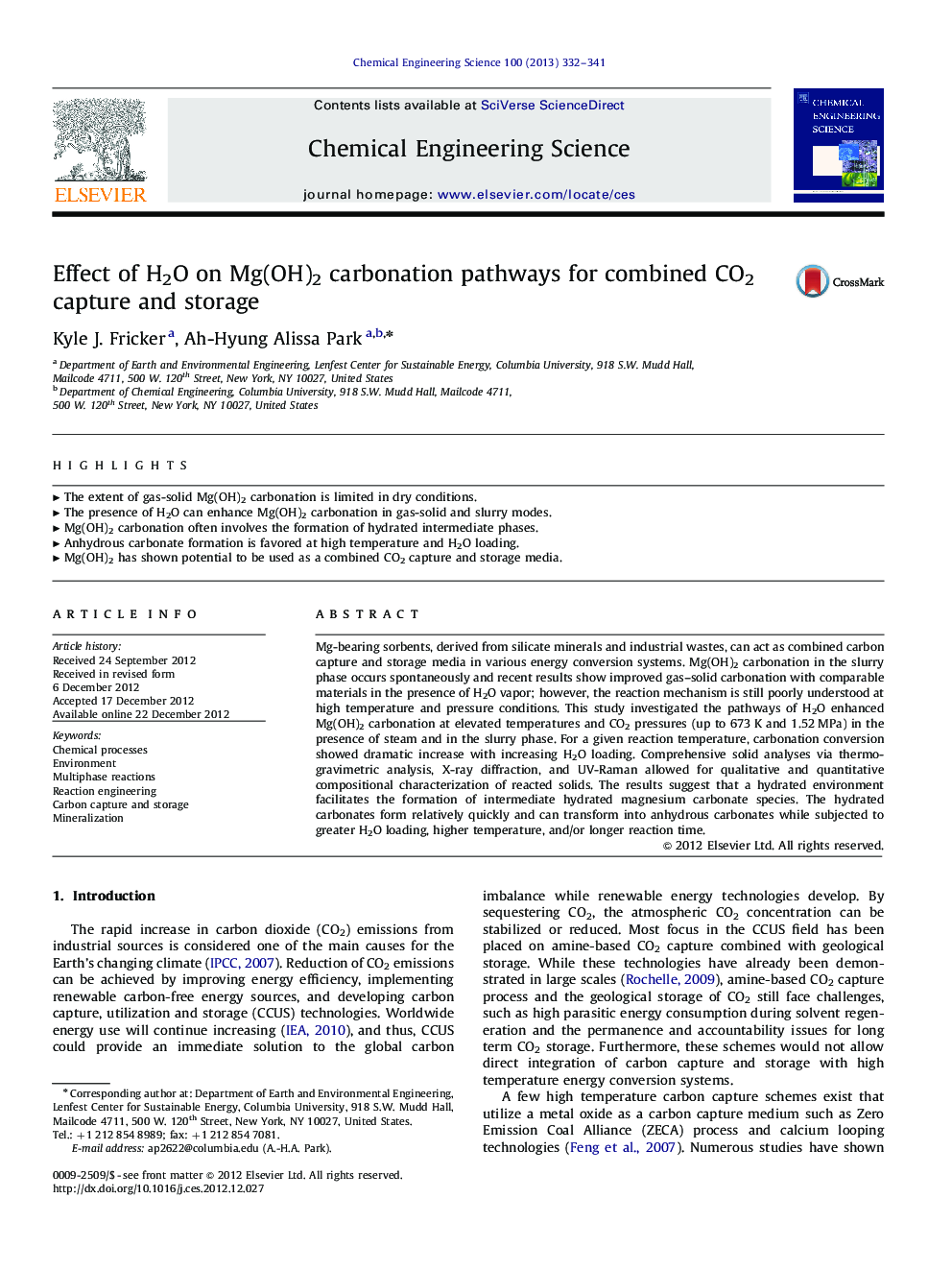| Article ID | Journal | Published Year | Pages | File Type |
|---|---|---|---|---|
| 155078 | Chemical Engineering Science | 2013 | 10 Pages |
Mg-bearing sorbents, derived from silicate minerals and industrial wastes, can act as combined carbon capture and storage media in various energy conversion systems. Mg(OH)2 carbonation in the slurry phase occurs spontaneously and recent results show improved gas–solid carbonation with comparable materials in the presence of H2O vapor; however, the reaction mechanism is still poorly understood at high temperature and pressure conditions. This study investigated the pathways of H2O enhanced Mg(OH)2 carbonation at elevated temperatures and CO2 pressures (up to 673 K and 1.52 MPa) in the presence of steam and in the slurry phase. For a given reaction temperature, carbonation conversion showed dramatic increase with increasing H2O loading. Comprehensive solid analyses via thermogravimetric analysis, X-ray diffraction, and UV-Raman allowed for qualitative and quantitative compositional characterization of reacted solids. The results suggest that a hydrated environment facilitates the formation of intermediate hydrated magnesium carbonate species. The hydrated carbonates form relatively quickly and can transform into anhydrous carbonates while subjected to greater H2O loading, higher temperature, and/or longer reaction time.
► The extent of gas-solid Mg(OH)2 carbonation is limited in dry conditions. ► The presence of H2O can enhance Mg(OH)2 carbonation in gas-solid and slurry modes. ► Mg(OH)2 carbonation often involves the formation of hydrated intermediate phases. ► Anhydrous carbonate formation is favored at high temperature and H2O loading. ► Mg(OH)2 has shown potential to be used as a combined CO2 capture and storage media.
